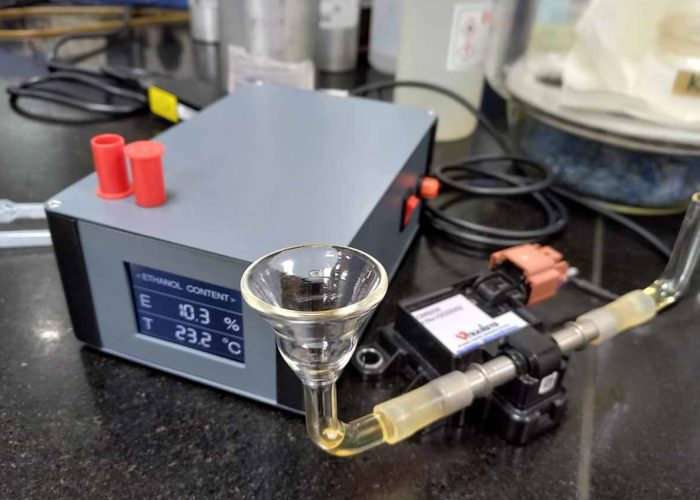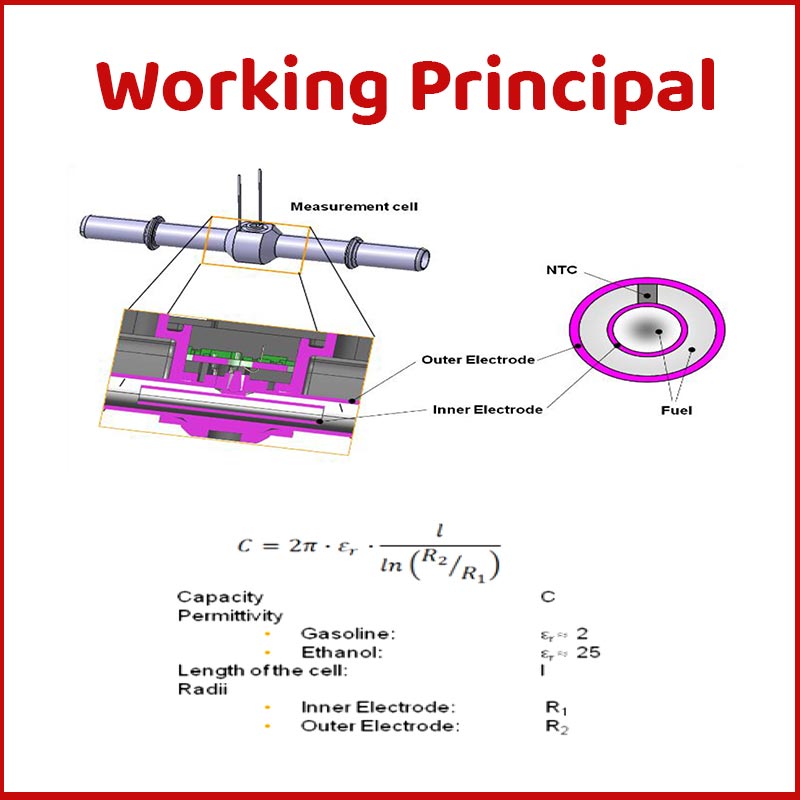



Ethanol
Growth factor in India
India has been planning to shift more into a much greener source of energy. The country has decided to increase the production of Ethanol twice by 2025. Let’s look at the importance of Ethanol in the economy and why India is planning to spend an amount of around USD 7 billion for the production of Ethanol.
Ethanol also contributes towards removing carbon from the environment which is expected to remove around pollution caused by 10 million cars on the road. It is also a cleaner and more greener option compared to the traditional fuel options.
Products & Applications
India has been planning to shift more into a much greener source of energy.
The country has decided to increase the production of Ethanol twice by 2025.
- Portable and quick installation set up (5min) to measure ethanol contents
- Easy to operate and accurate measurements
- Minimum dimensions, making it the smallest and convenient use
- Great robustness and durability, given the optimal measurement results
- Circular connector that facilitates assembly and disassembly.
- TFT Display, clear visualization of measurement data
- Simultaneous measurement of fuel temperature (Optional) & ethanol contents
- Direct input to ECU (CAN Protocol) – Optional (under development)
- Device can be operated either 9 – 15 Vdc or 230Vac
- 0 – 5 Vdc Analog output for Data loggers
- Serial Interface available on request (Optional)
- Independent PC application for data logging in .csv format (Optional)
Basic Description
The so called flexible fuel vehicle (FFV) runs on normal gasoline but also blends of gasoline and ethanol. In the US and Europe E85 is a common fuel which includes 85 % of ethanol and 15 % of gasoline. The limit in ethanol content is set to avoid cold starting problems during cold weather and to reduce ethanol emissions at low temperatures. Due to the lower energy density of ethanol compared to gasoline, the fuel economy is reduced by up to 30 %. However, the performance of the engine remains the same.
There are flexible fuel vehicles that adjust the fuel injection based on the oxygen sensor’s signal. The stoichiometric air/fuel mixture for gasoline is 14.7 whereas for E85 the required mass of air is 8.765 times the mass of the fuel to be burned in the cylinder. If the ethanol content in the fuel increases the oxygen sensor will indicate a lean mixture and the ECM will increase the amount of fuel injected. When using this method any change in the air/fuel ratio will result in an adjustment of the fuel injection, even though the change might be related to some failure in the system. Therefore, it is more accurate and reliable to employ a flexible-fuel sensor, also called flex-fuel sensor. The sensor determines the ethanol content of the fluent fuel before it is injected. For an immediate response the location of the sensor is chosen as close to the injector as possible.
The picture above shows the measurement cell of the sensor. It is basically a cylindrical capacitor consisting of two tubes,
the inner and outer electrode. The fuel flows through the gaps between. An AC voltage is applied to the electrodes. The
relative permittivity of the fuel changes with the ethanol content, which leads to a change in the capacity accordingly
(picture shown above). As the capacitance increases with increasing ethanol content, the oscillation frequency in the system
will decrease and vice versa.
The analog frequency output is tied to a microprocessor which determines the capacitance by working backwards from the
measured frequency. Due to the correlation between ethanol’s permittivity and the fluid’s temperature, the microprocessor
corrects the capacitance for temperature variations in the fuel according to the output from an NTC (Negative Temperature
Coefficient) thermistor. In addition, errors caused by the different conductivities of gasoline and ethanol are corrected.
The frequency of the single-wire output of the microprocessor to the ECM indicates the percentage of ethanol in the fuel. If
required by the OEM the pulse width of the signal will indicate the fuel temperature. The ECM adjusts the injection according to the blend of the fuel, which leads to a stoichiometric combustion.

Driving Factors
Ethanol has already been extensively adopted in the United States, European Countries and has been contributing to the country’s economy. The approach taken by the Government of India towards increasing the production of Ethanol will be a significant step in the major sectors of the economy from Automobile to Agriculture
FDI
Make in India Initiatives
Domestic Development
End user demand
Application Features
- Portable and quick installation
- Easy to operate and user friendliness due to small size
- Durable: Lasts for years
- Circular connector facilitates assembly and disassembly.
- TFT Display, clear visualization of measurement data
- Simultaneous measurement of fuel temperature (Optional)
- Direct input to ECU - CAN Protocol (Optional)
- Device can be operated either 12 – 18 Vdc or 230Vac
- 0 – 5 Vdc Analog output for Data loggers
- Eas y communi cation with tes t bed automation system or onboard testing - RS232 Interface available on request (Optional)
- Independent PC application for data logging in .csv format (Optional)
Our References












Address List
-
Vtransys Solutions
Royale Rahadki Greens,
Ph - I, F-306, Sr. No. 30/1/2/3, Shivraj Nagar, Rahatni, Pune – 411017 - +91 9763187979
-
info@vtransys.in
vaibhav.jaykar@vtransys.in
Social Networks
- yourfbusername
- @twitterhandle
- insta_account
- plusprofilename
- username
Links List
Vtransys
Unique & quick concept to measure ethanol contents in gasoline fuel
